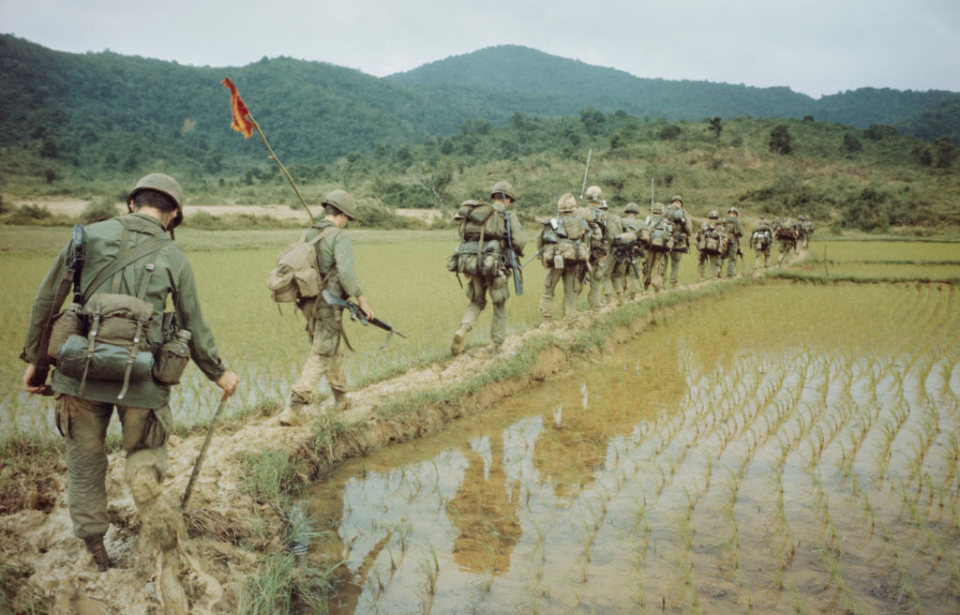The Vietnam War gained notoriety for the guerrilla warfare that took the American forces by surprise. The Viet Cong, operating on their home turf, exploited this advantage with skillfully crafted booby traps. What set these tactics apart wasn’t just their cost-effectiveness, but also the clever use of bamboo, often eluding detection by the United States’ mine detectors.
The traps’ primary aim wasn’t necessarily lethal; instead, they sought to maim, employing a cunning strategy that forced American soldiers to tend to their wounded comrades, impeding their progress. This challenging situation was further compounded by secondary traps targeting those attempting to aid the injured.
Around 11 percent of fatalities and 17 percent of injuries among US troops between 1969-70 were attributed to encounters with these traps and mines. In 1965, this figure was a staggering 70 percent.
These insidious booby traps also took a psychological toll on soldiers, eroding their morale. Amid navigating the perilous jungle terrain, they existed in a constant state of vigilance, always wary of well-concealed Viet Cong traps.
Bow trap
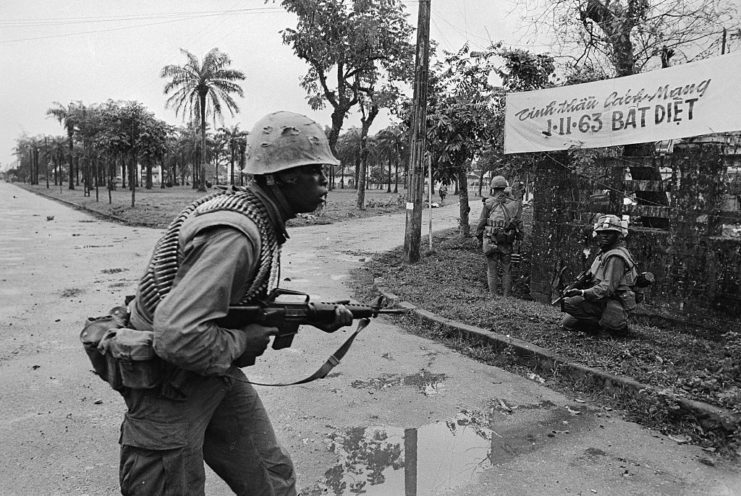
The bow trap, a straightforward, yet impactful booby trap, was employed by the Viet Cong in the initial stages of the Vietnam War. A tensioned bow, ready to launch, was connected to a tripwire. When triggered by a soldier, the bow would release right at their location, causing a direct hit to the midsection.
Furthermore, some guerrillas arranged this trap within a shallow pit. In such cases, the bow was positioned at an upward angle, ensuring that the projectile would strike the enemy in the lower extremities.
Punji sticks
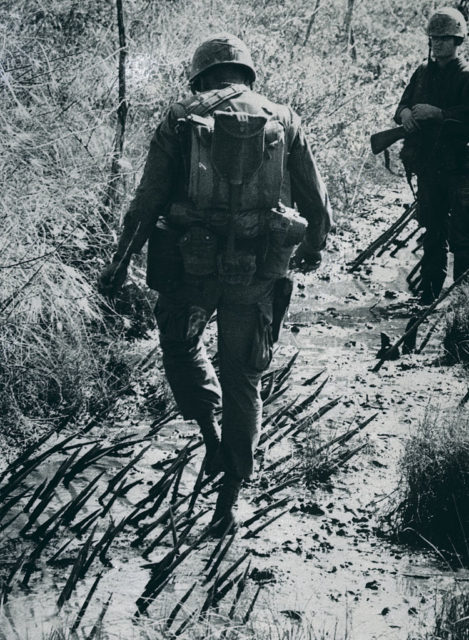
Bamboo whip
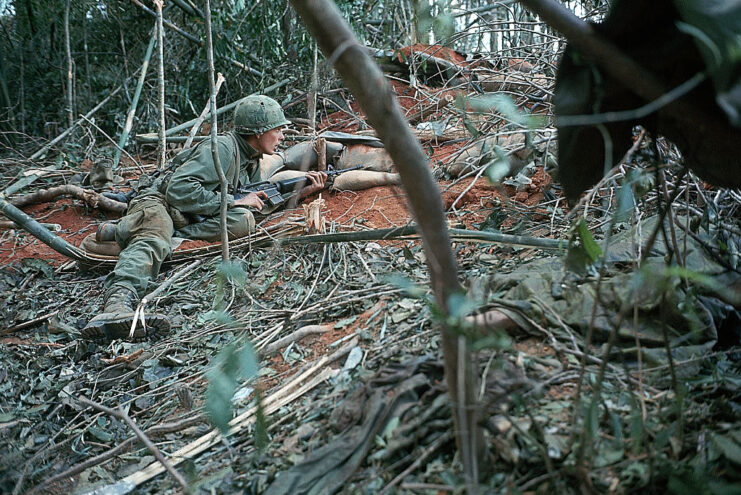
The Viet Cong employed another ruthless booby trap: the bamboo whip. This involved attaching a bamboo pole to a tripwire and pulling it back with significant tension. The pole was equipped with foot-long spikes, meaning when the tripwire was activated, the individual tripping it would be impaled by the spikes as the pole swiftly whipped forward.
The pole and its spikes could reach speeds of up to 100 MPH. Similar to punji sticks, these spikes could be coated with poisonous substances, exacerbating the impact on the victim’s ability to heal.
Swinging mace
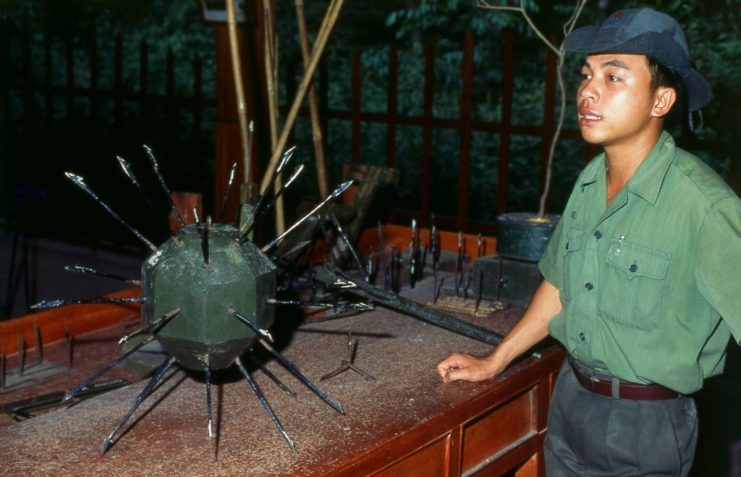
Like the bamboo whip, the swinging mace operated on a comparable principle. Instead of being attached to a pole, it showcased spikes on a 24-inch sphere crafted from clay, wood or metal. Its activation was set off by a tripwire, and the ball usually weighed over 40 pounds.
This stood out as one of the brutally effective tactics employed by the Viet Cong. Once the hidden ball was set in motion, gravity propelled it downward from a tree, inflicting severe injuries to a soldier’s upper body, with a focus on their head and upper torso.
Tiger trap
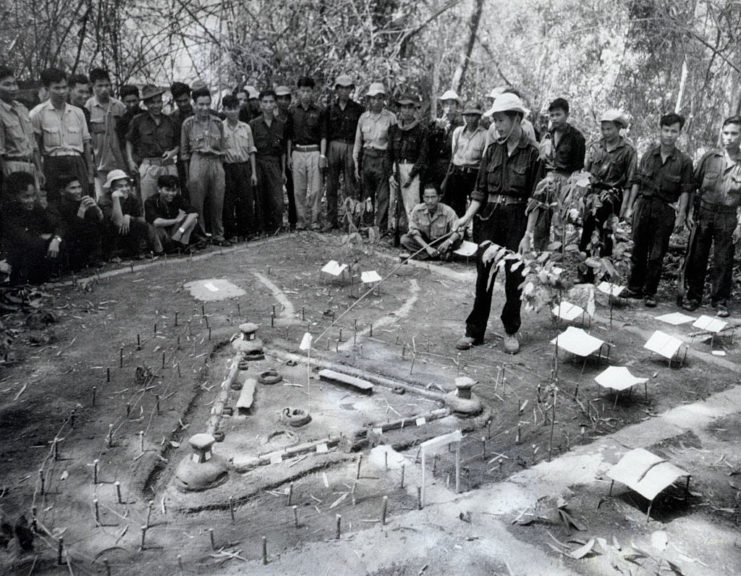
The tiger trap was another Viet Cong booby trap that, like the swinging mace, caused significant injury to a soldier’s upper body. The trap was sprung when the intended victim triggered a tripwire, causing a wooden plank imbued with metal spikes to fall on them.
This was made all the more brutal by the addition of weighted bricks or other objects on the board.
Snake pit
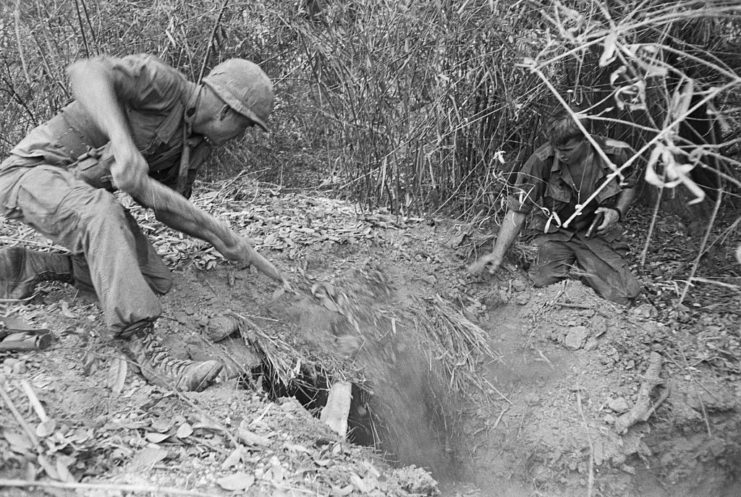
Snake pits were primarily used within the Viet Cong’s tunnel systems.
A poisonous snake would be attached to a piece of bamboo, and when released on the victim would place the reptile in the perfect location to attack. Snake pits were encountered by American “tunnel rats,” but the Viet Cong would put snakes in other locations, too, such as in their bags or in old weapons caches.
Bamboo pit vipers were a common snake used by the Viet Cong. Within a few minutes of being bitten, the flesh surrounding the bite turned necrotic, swollen and extremely painful. However, the Malayan krait was the most infamous, earning the nickname, the “two-step snake,” sometimes mischaracterized as the “three-step snake.” This is rooted in a myth that a soldier bitten by one was killed in the short time it took him to move two steps.
Cartridge trap
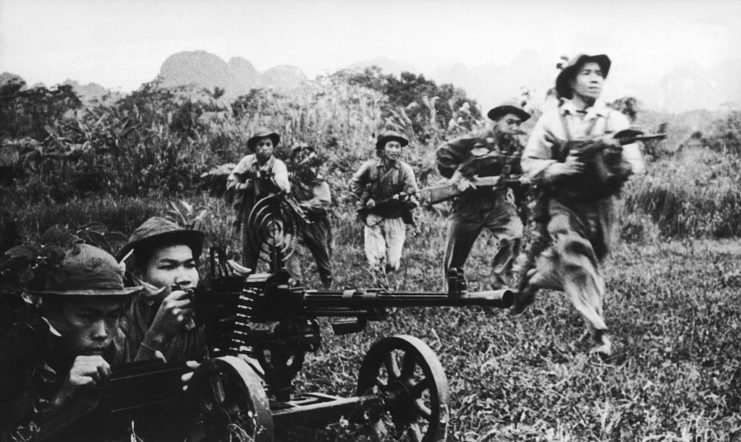
Cartridge traps operated in a similar way to punji sticks, in that they were placed within a hole in the ground. An ammunition round would be set within a tube made from bamboo, with a nail and wooden board placed underneath to act as a mock firing pin. Camouflage was then placed overtop to prevent enemy soldiers from detecting it in advance.
When they stepped on the booby trap, the soldier’s weight would activate the ammunition and fire it through their foot. As such, these were sometimes called “toe-poppers.” The extent of the injury was largely based on the size of the shell. Smaller ones often left men permanently disabled, while larger shells were fatal.
Grenade-in-a-can
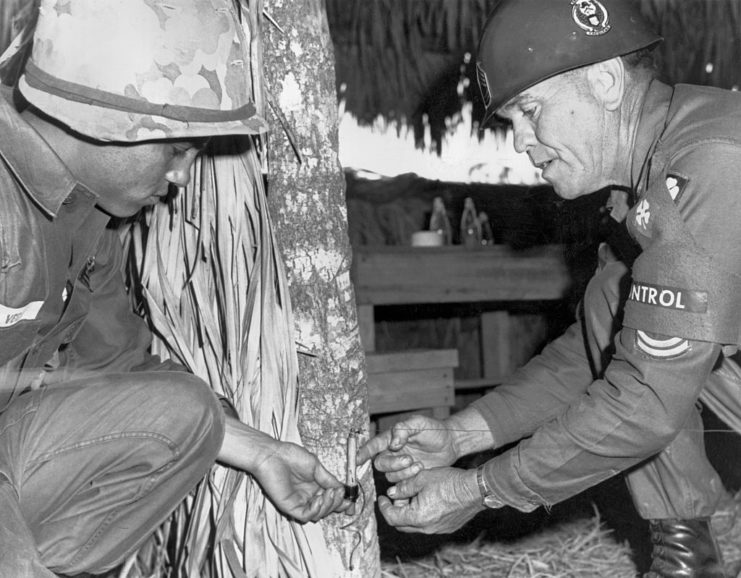
As the name indicates, the grenade-in-a-can was constructed by placing a grenade, with its safety pin removed, into a can, which held down the striker lever. A tripwire was then attached and, when tripped, would pull the explosive out of the can and cause it to detonate.
This type of trap could either be constructed with a single can and a stake, or with two. If two cans were used, they were mounted on trees on either side of a path, with the tripwire running between them. These booby traps were typically positioned in a stream and along the entrances to the Viet Cong’s tunnels.
Rigging war trophies
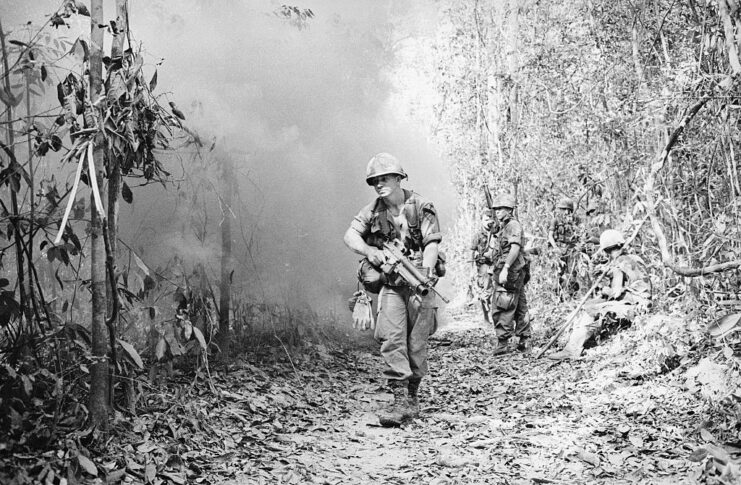
These booby traps were created based on the fact that American troops enjoyed capturing the flags of their enemies. When Viet Cong guerrillas were forced from their bases, they’d rig their flags with explosives, which detonated when the US soldiers took them down.
Want War History Online‘s content sent directly to your inbox? Sign up for our newsletter here!
The Viet Cong knew the Americans also enjoyed taking other items as war trophies. As such, they rigged them with similar explosives, so that, if the enemy combatants wanted to take anything from abandoned camps, the explosives would detonate, causing additional casualties.
